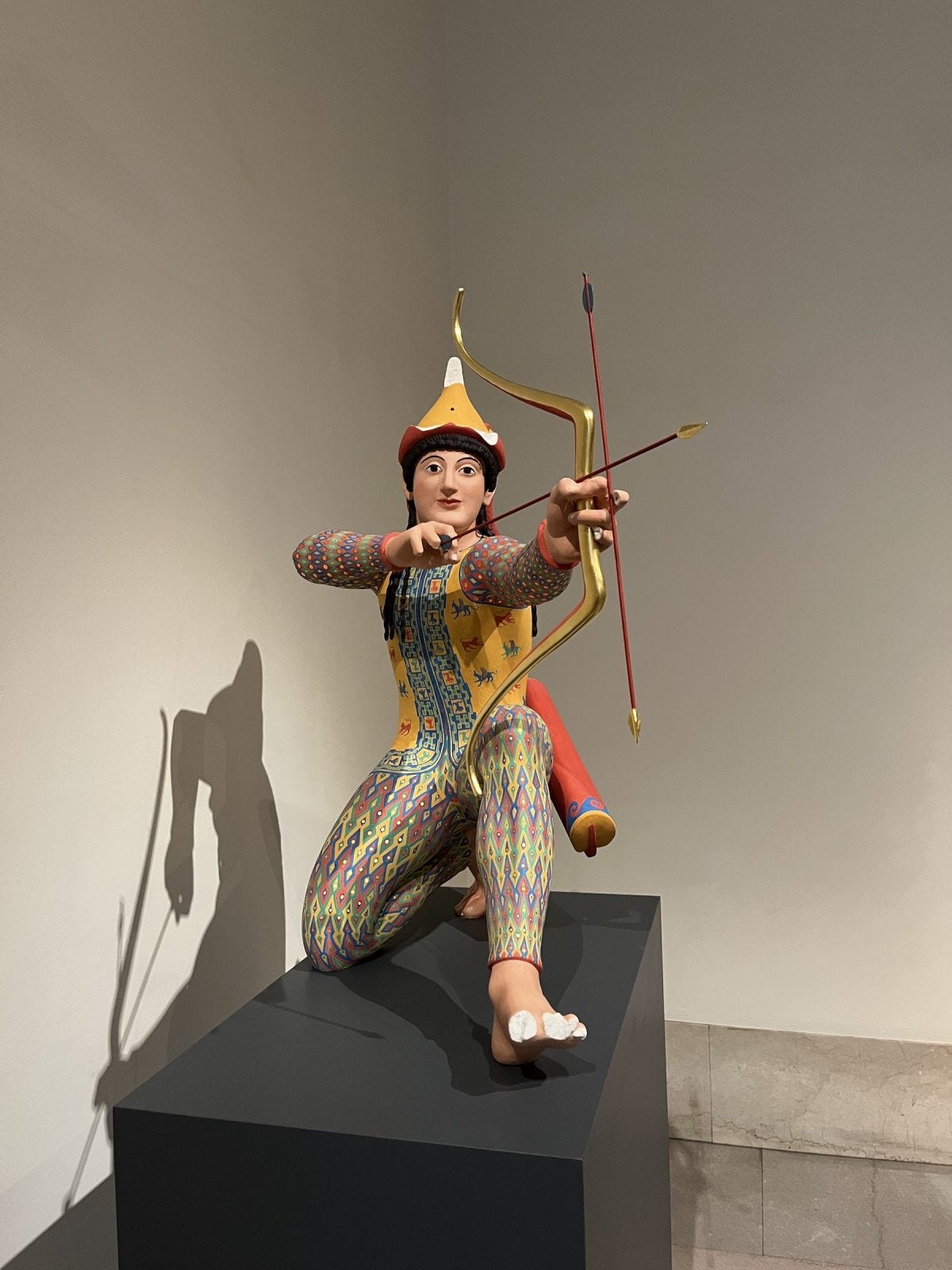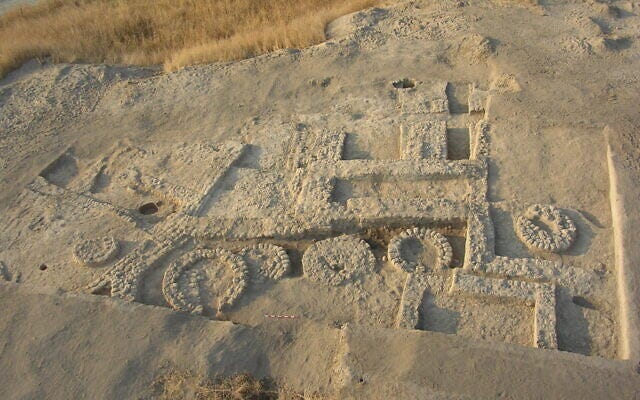Weekly Roundups- July 22nd
Good Kings and the bomb squad, Tut's Shrine to the GEM, sculpture in color, and a new tomb in Egypt--keep reading to find out more!
Police Say “Crazy” Montana Man Sent Cheney Witchcraft Book In Suspicious Package
The Good Kings was included in a suspicious package send to Representative Liz Cheney. The package also included a book about witchcraft, which we suppose is quite fitting given the subversive nature of witches. Kara is quite happy that The Good Kings was included in such august company. To make things all the more interesting the bomb squad was called as well. We can only hope the book was filled with sticky notes and annotations because critical reading is the way one learns to be anti-authoritarian, but we suspect the creator of the suspicious package was your typical white supremacist patriarch, *sigh*…

Grand Egyptian Museum receives Tutankhamun's biggest shrine
The Grand Egyptian Museum (GEM) recently received the first and largest shrine of King Tut, a major engineering endeavor by museum staff (kudos to them!). The shrine had to be disassembled into 20 pieces, wrapped and then transported to the GEM across the busy streets of Cairo (a very slow and cautious drive probably in the middle of the night!). The shrine is very delicate, constructed of wood covered in gold leaf.
The Shrine is just one of many pieces that will be on display at the new GEM museum, with more than 95% of Tut’s collection to be on view to the public.

This Pioneering Economist Says Our Obsession With Growth Must End
Well-respected economist Herman Daly is advocating for a change in thought; that economic growth should not be the end-all be-all. There are limits to our planet’s resources and if economies keep growing (read: consuming) eventually we will bleed the Earth dry, and we are already seeing the disastrous effects. Daly, instead, proposes we redefine how we see “growth" and “healthy economies.” Sustainability and stasis should be our focus now that the earth is supporting almost 8 billion people. Seriously, how we gonna support more than that?
Last we checked, the planet is not growing so how are supposed to rely on infinite growth to survive. Time to end this cruel patriarchal practice and save our ecosystem.

Met Exhibition Brings Back the Color to Ancient Sculptures
The MET has a wonderful new exhibition, Chroma: Ancient Sculpture in Color, to showcase the vividly colorful world of the ancient Greeks and Romans. When most people think of Greek or Roman sculpture, they tend to picture plain white marble, but this was never the intention of the ancient artists. Every sculpture would have been brilliantly painted—red, blue, green, yellow, orange!—but why do so many have such an issue with realizing this polychromy past? Well, it’s just more white supremacist patriarchy, which reminds us that study of antiquity can never consider itself apolitical. Everything is political. The article states:
Hemingway spoke to the grim implications of whitewashing ancient art: Not only does a stunted understanding of ancient polychromy present a version of history in which societies were more White-centric than they actually were, but it renders the Classical ideal, upheld as an aesthetic standard for art and beyond, also White.
“White supremacists have latched onto this idea of white sculpture — it’s not true but it serves their purposes,” Hemingway said.
Amber:
In 2008 the Getty Villa hosted a similar exhibition on color in ancient art called The Color of Life. As an educator I had the opportunity to take many groups through the exhibition, and I found that many museum goers found the colorized reproductions of the ancient statues distasteful and often candidly said that they preferred the plain white, colorless sculpture. And no wonder—Western art, particularly since the 18th century has elevated colorless white marble (or bronze) sculpture as the “fine art” ideal. Having just toured monuments to some of the U.S. “founding fathers” and Washington, D.C., it’s plain to see that American culture took that lesson to heart, erecting colorless white marble monuments across the country, especially in the capitol. As someone who understands that ancient art was full of bold, vibrant color, America’s colorless, Classically derivative government buildings and monuments are striking. It’s clear we are elevating a misconceived ideal of ancient art and architecture, which has little to do with how it actually would have appeared and everything to do with Hemingway’s keen observation.

The tomb of Wahibre-mery-Neith discovered by the Czech archaeological mission in Abusir
The Czech team working at Abusir uncovered a new tomb belonging to Wahibre-mery-Neith, the “Commander of Foreign Mercenaries” during the late 26th/early 27th dynasties. This title is particularly interesting as it reflects the increasing “globalization” of the greater Mediterranean basin with immigrants from the Aegean and Asia Minor coming into Egypt for work. As they say in Hamilton, “Immigrants, they get the job done!”
This individual lived during a very chaotic time in Egyptian history— right at the beginning of the Persian conquest of Egypt, which is rather understudied from the Egyptological perspective (but which UCLA is doing its best to cover with new grad students doing both Persian and Egyptian ancient language study!).

Study: World’s first cultivated fruit trees planted 7,000 years ago in Jordan Valley
A new study out of Tel Aviv University and Hebrew University has found the earliest evidence for fruit tree domestication in the Jordan Valley dating back some 7,000 years. Charcoal was analyzed from the site of Tel Tsaf which came from olive and fig trees, non-local species in the region. This means that these trees were specifically brought in to the area for their produce. Olive and fig trees require a large initial investment since they normally do not start producing fruit for at least 3 or 4 years. The researchers argue that this indicates the site was relatively well-off for that time then and was likely funded by wealthy patrons able to invest.a
It’s so interesting to consider how different species of plants (and animals) were relocated in antiquity. Now we think of olives and figs as indigenous to the Levant, but now we know it wasn’t always that way. So now, get some ripe figs, cut them in half, drizzle with olive oil and some crunchy rock salt. Delicious…






